
Category of Astronomical Heritage: tangible immovable
Sydney Observatory, Australia

Description
Geographical position
Sydney Observatory, Observatory Hill, Upper Fort Street, Millers Point, Sydney 2000, New South Wales, Australia:
- first observatory Dawes Point, at the foot of Observatory Hill (1788), erected by William Nicolas Dawes (1762--1836), astronomer and officer of the British Marines,
- second observatory at Parramatta (1821), O’Connell Street (near George Street), Parramatta Park, Parramatta, 2150, NSW, Australia (Latitude: -33.8125, Longitude: 150.999444)
- third observatory, Observatory Hill (1858)
Location
Latitude 33°51’35’’ S, Longitude 151°12’17’’ E, Elevation 47m above mean sea level.
IAU observatory code
420
Description of (scientific/cultural/natural) heritage
Parramatta Observatory (1821/22)
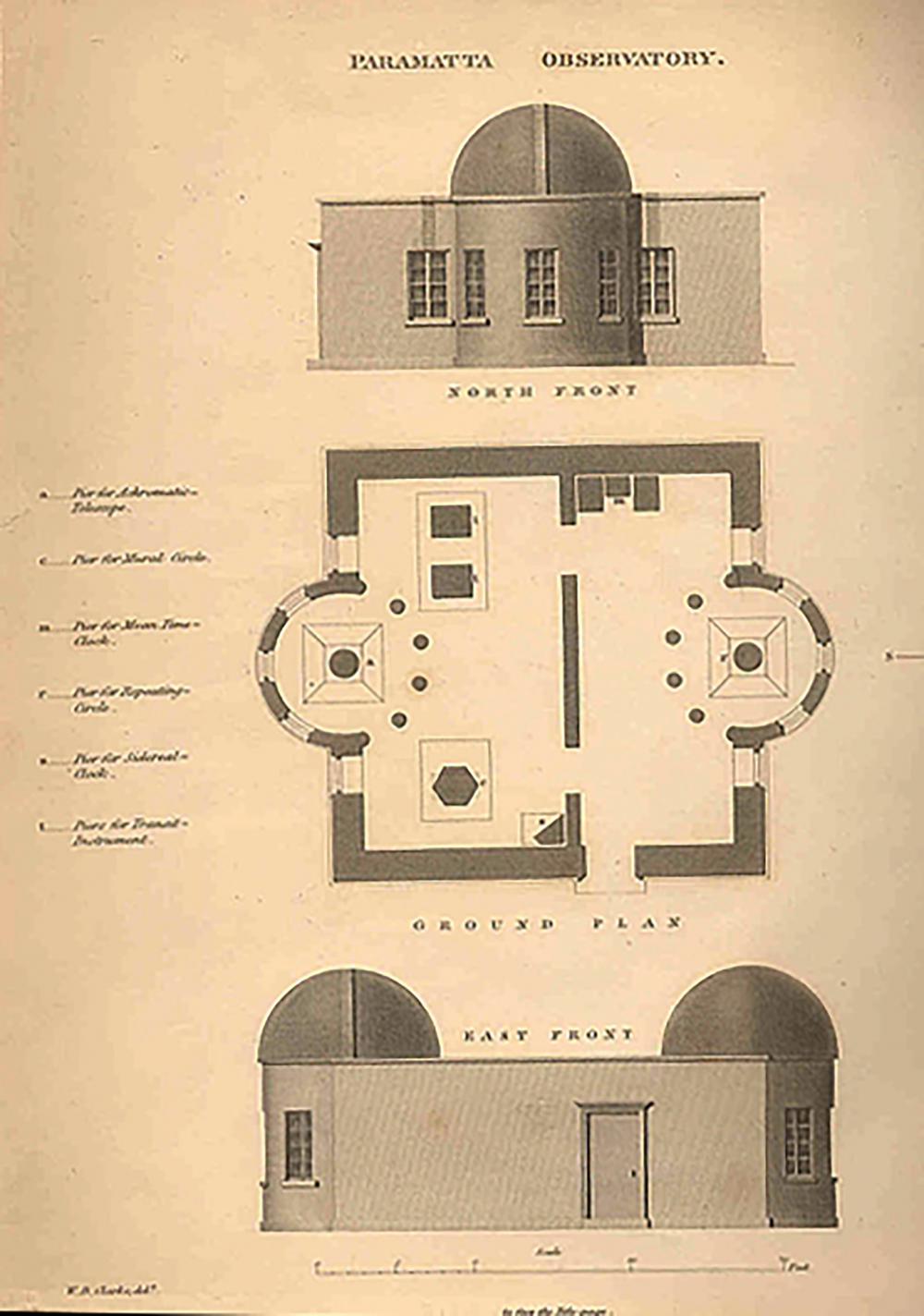
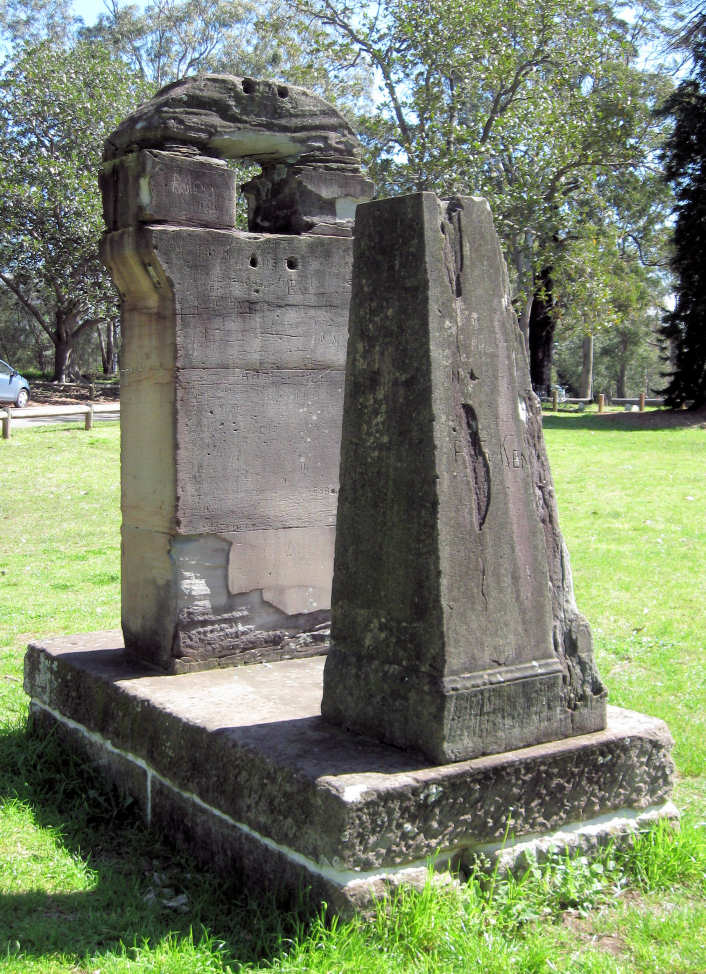
Fig. 1a,b. Paramatta Observatory (1822), footprint and meridian circle pillars
(private collection: G. Wolfschmidt)
Parramatta Observatory, 24 km west of Sydney, was founded in 1822 as a private observatory by Sir Thomas Makdougall-Brisbane (1773--1860), Governor of NSW. The dimensions of the building were 8.5mx8.5m and the diameter of the north and south dome was 3.5m.
The instrumentation comprised a 5½ ft transit instrument and a 2 ft mural circle, both by Edward Troughton of London, a 16-inch brass repeating circle, Reichenbach, Utzschneider & Liebherr, and a 46-inch equatorial telescope by Banks, a celestial globe (1791), a Hardy astronomical regulator, and a Breguet clock.
Karl Rümker (1788--1862), teacher at the navigation school in Hamburg (1819 to 1820), appointed first as an assistant to Brisbane, then in 1826 after Brisbane left the Colony, as head of Parramatta Observatory -- and he was the first government astronomer (1826 to 1830), together with James Dunlop (1793--1848), telescope maker since 1810 and head of Parramatta Observatory (1831 to 1847). Rümker compiled an extensive star catalogue for the southern sky with over 7000 star positions (published in London in 1829 and in Hamburg in 1832). In 1847, Parramatta Observatory was closed, and demolished in 1876. The position of the observatory’s transit instrument was marked by an obelisk in 1880.
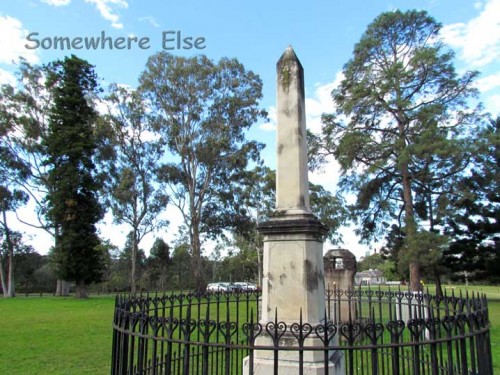
Fig. 2. Obelisk, marking the position of Paramatta Observatory (1880)
(private collection: G. Wolfschmidt)
Sydney Observatory on Observatory Hill (1858)
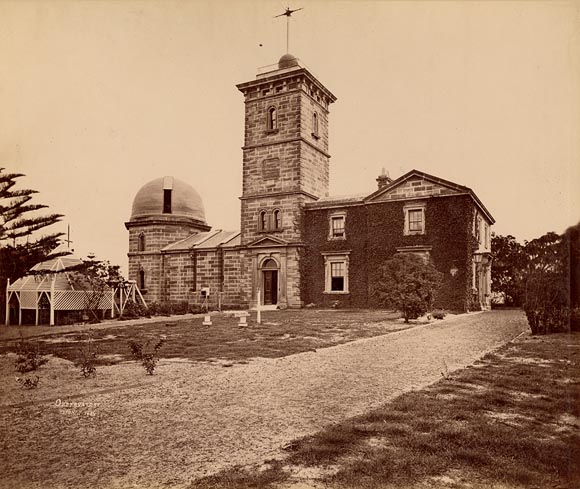
Fig. 3. Sydney Observatory, Observatory Hill, Sydney, 1874
(NSW Government Printing Office, State Library of NSW, SPF/304, Wikipedia)
The Sydney Observatory was erected by the architect William Weaver (plans) supervised by Alexander Dawson in the style of Florentine Renaissance (1858). The Observatory Hill, where the Observatory was located - close to the port, was first used as Windmill Hill (1797), then Fort Phillip (1803) was used as signal station for flags, and finally Flagstaff Hill (1811), where a semaphore was used.

Fig. 4. View from Sydney Observatory to the Harbour and Bridge (Wikipedia 2.5, Greg O’Beirne)
The observatory was responsible for timekeeping, a time ball was constructed in 1858 for the time signal at 1 pm for the ships in the port and for the city clocks, in addition a cannon was fired on Dawes Point.
Concerning astronomy, the observatory took part in the observations of the transit of Venus (1874) and it is famous for its participation in the International Astrographic Catalogue (Carte du Ciel) project.
Due to growing air and light pollution in the city center, Sydney Observatory was closed in 1982 and converted into the Powerhouse Museum.
History
Historical Instruments of Parramatta and Sydney Observatories
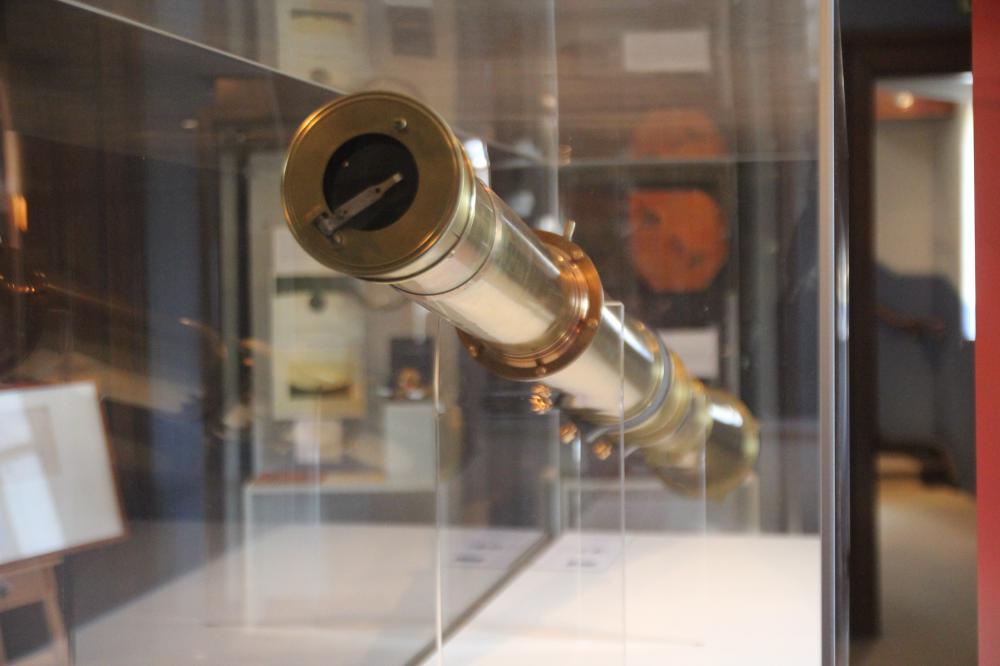
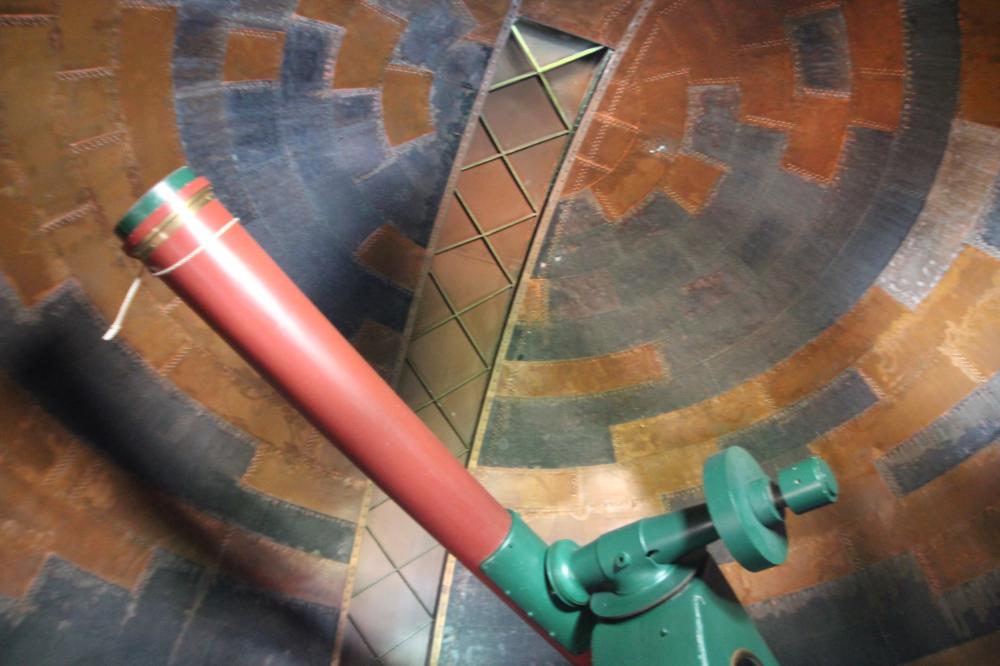
Fig. 5a,b. Sydney Observatory, Photoheliograph and 29-cm-Schroeder-Refractor (1874) (Wikipedia 4, Sgerbic)
- 16-inch Repeating circle (brass), Reichenbach, Utzschneider & Liebherr of Munich
- 5½ ft Transit instrument, Edward Troughton of London
- 2 ft Mural circle, Edward Troughton of London
- 46-inch Equatorial telescope by Banks
- Celestial globe (1791)
- Hardy astronomical regulator
- Breguet clock
- Time Ball with mechanism, made by Maudslay, Sons & Field of London (1855) - Tower in the middle of the main building
- Photoheliograph for photographing the Sun
- 29-cm-Refractor, Hugo Schroeder of Hamburg (1874), used for the Venus transit (1874) - southern dome
- 15-cm-transit circle, Grubb of Dublin (1877) - for timekeeping and surveying
- 40-cm (16 inch) Schmidt-Cassegrain telescope - northern dome
State of preservation
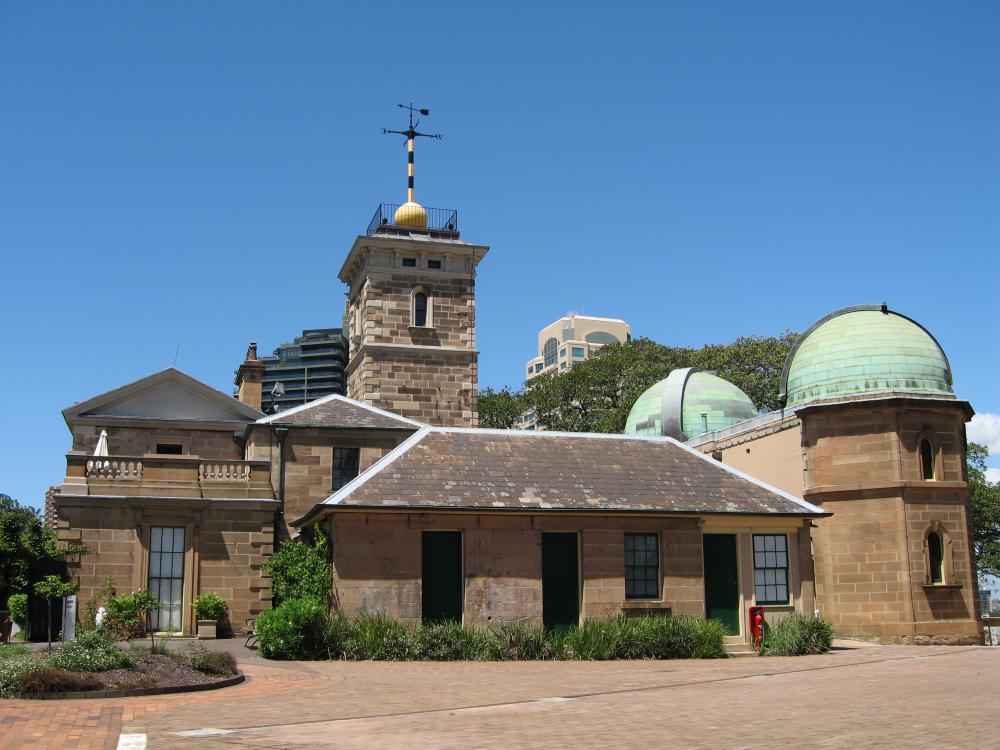
Fig. 6. Sydney Observatory with the two domes and the time ball tower (Wikipedia 2.5, Greg O’Beirne)
The Time Ball is still working with the original mechanism!
The building was renovated in the 1980s.
The Sydney Observatory / Powerhouse Museum is on the State Heritage Register
in New South Wales (Reference no. 1449, December 22, 2000).
Comparison with related/similar sites
Old Perth Observatory has a similarity.
Sydney and Melbourne Observatories are highly significant 19th century observatories
and are heritage sites, public observatories and museums of astronomy.
Threats or potential threats
no threats
Present use
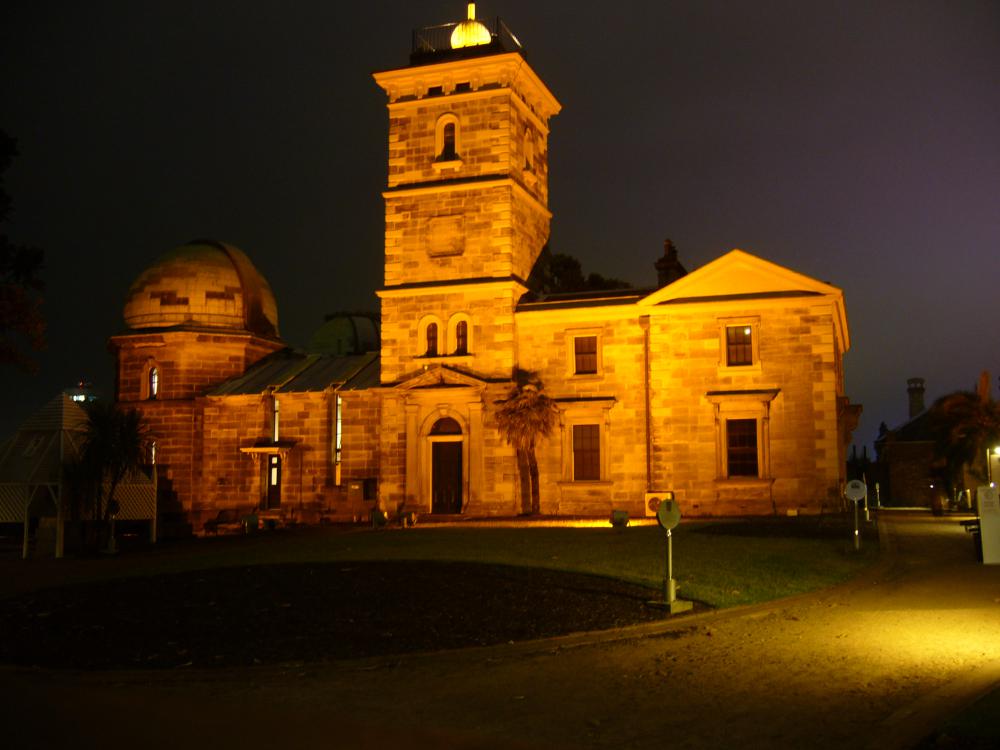
Fig. 7. Sydney Observatory (Wikipedia 4, Hohohob)
Powerhouse Museum (museum of astronomy and meteorology) and public observatory (modern telescope in the northern dome).
Astronomical relevance today
Active in modern astronomy until 1982.
Modern optical telescopes in Australia
https://en.wikipedia.org/wiki/List_of_telescopes_of_Australia
- Anglo-Australian Telescope (3.9m, 1974-)
- Automated Patrol Telescope (.5m, 1989-2008)
- Faulkes Telescope South (2m, 2004-)
- SkyMapper (1.35m)
- UTas H127 (1.27m)
- Siding Spring Telescope (2.3m)
- Sydney Observatory instruments
- Penrith Observatory (0.6m)
- Uppsala Southern Schmidt Telescope (0.5m)
References
Bibliography (books and published articles)
- Ajaka, John: Sky the Limit as Historic East Dome Placed at Sydney Observatory. NSW Minister for Ageing and Disability Services (6 November 2014).
- Bergman, George F.J.: Christian Carl Ludwig Rümker (1788--1862). Australia’s first Government Astronomer. In: Royal Australian Historical Society 46 (1960), part 5.
- Bergman, George F.J.: Rümker, Christian Carl Ludwig (1788--1862). In: Australian Dictionary of Biography, Vol. 2. Melbourne: Melbourne University Press [MUP] 1967, p. 403-404.
- Ellmoos, Laila: Sydney Observatory building. In: Dictionary of Sydney. Dictionary of Sydney Trust 2008.
- Lomb, Nick: The Instruments of Parramatta Observatory. In: Historical Records of Australian Science 15 (2004), p. 211-222.
- Lomb, Nick: Private Communication (Sept. 2021).
- Mander-Jones, Phyllis: Dawes, William (1762--1836). In: Australian Dictionary of Biography, Vol. 1. Melbourne: Melbourne University Press [MUP] 1966, p. 297-298.
- Pickett, C. & Nick Lomb: Observer & Observed: A Pictorial History of Sydney Observatory and Observatory Hill. Sydney: Powerhouse Publishing 2001.
- Power, Julie: Historic Time Ball clocks up an impressive record. In: The Sydney Morning Herald (2013),
(https://dictionaryofsydney.org/building/sydney_observatory_building).
- Serle, Percival: Brisbane, Sir Thomas Makdougall. In: Dictionary of Australian Biography, Vol. 1. Sydney: Angus and Robertson 1949.
- Serle, Percival: Rümker, Karl Ludwig Christian. In: Dictionary of Australian Biography. Sydney: Angus and Robertson 1949.
- Stevenson, T.: Making Visible the First Women in Astronomy in Australia: The Measurers and Computers Employed for the Astrographic Catalogue. In: Publications of the Astronomical Society of Australia 31 (2014), e018 (DOI: https://doi.org/10.1017/pasa.2014.12).
- Wood, Harley: Sydney Observatory 1858-1983. In: Proceedings of the Astronomical Society of Australia 5 (1983), 2, p. 273-281.
Links to external sites
- Office of Environment & Heritage: Sydney Observatory
https://www.environment.nsw.gov.au/heritageapp/ViewHeritageItemDetails.aspx?ID=5051545 - Sir Thomas Brisbane’s Observatory. Monument Australia,
https://monumentaustralia.org.au/themes/technology/science/display/22735-sir-thomas-brisbane%60s-observatory
Links to external on-line pictures
no information available
No multimedia content published
Currently there is no multimedia content published for this case study















